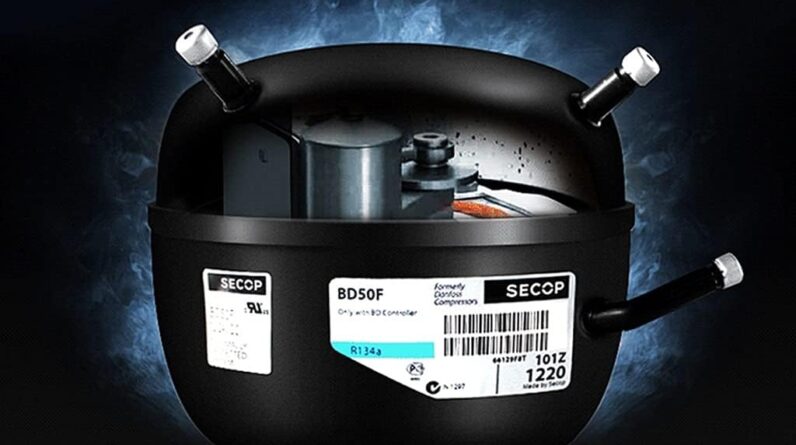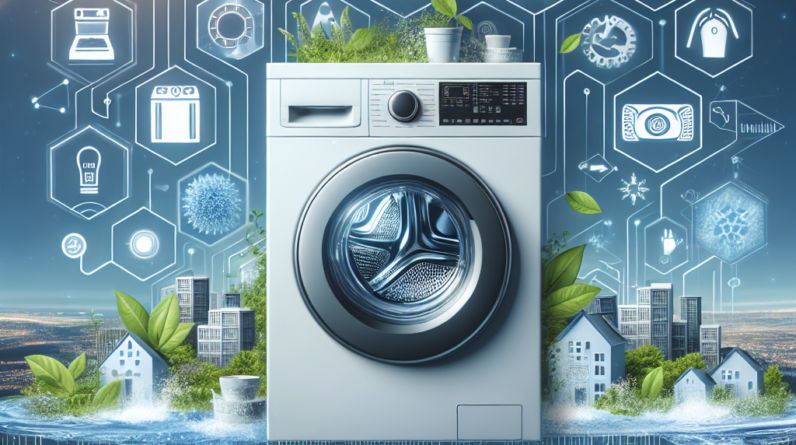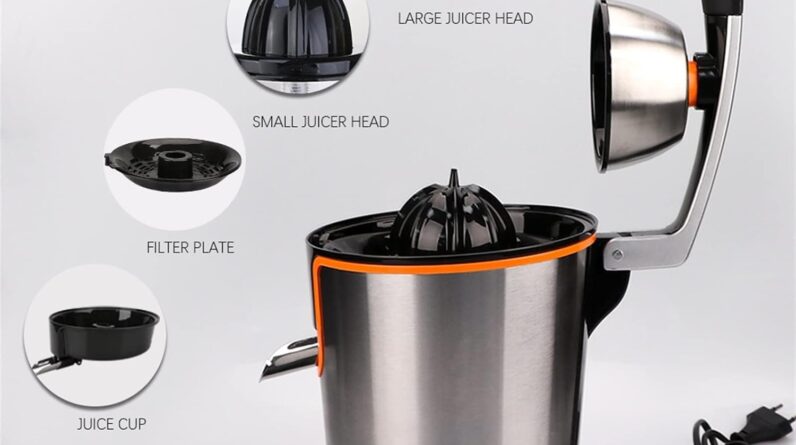
You love the convenience of having a dishwasher, but have you ever wondered how to keep it running smoothly? One of the key components to a properly functioning dishwasher is the drain hose. In order to ensure that your dishwasher drains properly and avoids any clogs or blockages, it’s important to clean and maintain its drain hose. In this article, we will explore several effective and easy ways to keep your dishwasher’s drain hose in top shape, allowing you to enjoy clean dishes without any hassle.

This image is property of pickhose.com.
Ways to Clean and Maintain a Dishwasher’s Drain Hose
Maintaining a clean and properly functioning dishwasher drain hose is crucial for the efficient operation of your dishwasher. A clogged or damaged drain hose can lead to drainage problems, leaks, and even damage to your kitchen flooring and cabinets. By inspecting, removing debris, flushing, and regularly cleaning the drain hose, you can ensure that your dishwasher continues to work effectively. In this article, we will guide you through each step so that you can keep your dishwasher’s drain hose in top shape.
Inspecting the Drain Hose
Checking for Clogs
The first step in maintaining a dishwasher’s drain hose is to inspect it for any clogs. Clogs can prevent proper drainage and lead to backups in your dishwasher. Start by turning off the dishwasher and unplugging it to ensure your safety. Then, locate the drain hose, which is typically located at the back of the dishwasher. Carefully detach it from the plumbing and examine it for any visible signs of clogs, such as food particles or debris.
Examining for Damage
Another important aspect of maintaining your dishwasher’s drain hose is to examine it for any signs of damage. Over time, the drain hose may become brittle, develop cracks, or even get punctured. If you notice any visible damage, it is essential to replace the drain hose to avoid leaks and potential water damage. Inspect the entire length of the drain hose, including the connections, and ensure that there are no issues that could affect its functionality.
Replacing a Damaged Drain Hose
If you have identified any damage to the drain hose, it is important to replace it promptly. Begin by purchasing a compatible drain hose from a reputable hardware store or dishwasher manufacturer. Once you have the replacement hose, carefully disconnect the damaged hose from the plumbing and the dishwasher. Then, attach the new drain hose, making sure to secure the connections tightly. Finally, reconnect the drain hose to the plumbing and the dishwasher, and ensure that it is properly positioned for optimal functionality.
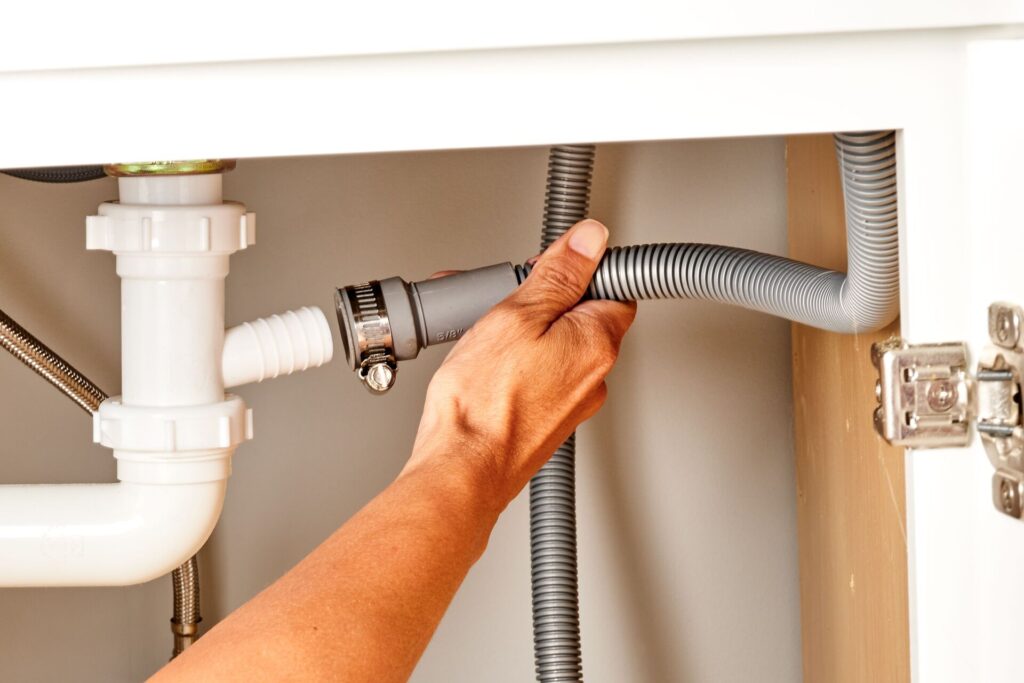
This image is property of storables.com.
Removing Debris from the Drain Hose
Disconnecting the Dishwasher
Before you start removing debris from the drain hose, always make sure to disconnect the dishwasher from power. This will help prevent any accidents or injuries while working on the drain hose. Locate the circuit breaker or unplug the dishwasher from the power outlet before proceeding.
Locating the Drain Hose
Once the dishwasher is safely disconnected, you can proceed to locate the drain hose. The drain hose is typically connected to the dishwasher and the plumbing system. Carefully observe the back of the dishwasher and trace the hose until you reach the connection point with the plumbing. Ensure that there is sufficient space to comfortably maneuver around the drain hose.
Removing Visible Debris Manually
To remove visible debris from the drain hose, start by detaching it from both the dishwasher and the plumbing. Take caution not to damage the hose during this process. Once the hose is detached, manually inspect it for any visible debris such as food particles or soap residue. Use your hands or a soft brush to remove the debris by gently wiping or brushing it off. Be thorough and ensure that the entire length of the drain hose is clean before proceeding.
Using a Plumber’s Snake or Wire to Clean Clogs
If you encounter stubborn clogs that cannot be removed manually, you can use a plumber’s snake or a long wire to dislodge the blockage. Carefully insert the snake or wire into the drain hose’s opening and gently push it through the hose while rotating it. This motion will help break up any clogs and allow water to flow freely. Once you feel that the blockage has been cleared, carefully remove the snake or wire and reattach the drain hose to the dishwasher and the plumbing.
Flushing the Drain Hose
Preparing for Flushing
Flushing the drain hose with water is an essential step in maintaining its cleanliness and preventing clogs. Before you begin, ensure that the dishwasher is turned off and unplugged from the power source. Additionally, ensure that there are no dishes or utensils inside the dishwasher that may obstruct the drain hose during the flushing process.
Flushing with Water
To flush the drain hose, you will need a bucket and access to a water source. Start by detaching the drain hose from the dishwasher and the plumbing, ensuring that water from the hose will flow into the bucket. Place the open end of the drain hose into the bucket and turn on the water source. Allow the water to flow through the drain hose for several minutes, effectively flushing out any accumulated debris or residue. Once the water runs clear, you can turn off the water source and reattach the drain hose to the dishwasher and the plumbing.
Using Vinegar for Stubborn Residue
If you notice any stubborn residue or buildup in the drain hose, you can use vinegar to help break it down. Mix equal parts white vinegar and water in a bucket or basin. Detach the drain hose from the dishwasher and the plumbing, and place the open end of the hose into the vinegar mixture. Allow the drain hose to soak for a few hours or overnight, depending on the severity of the buildup. After soaking, flush the drain hose with water as described in the previous section to remove the loosened residue. Finally, reattach the drain hose to the dishwasher and the plumbing.
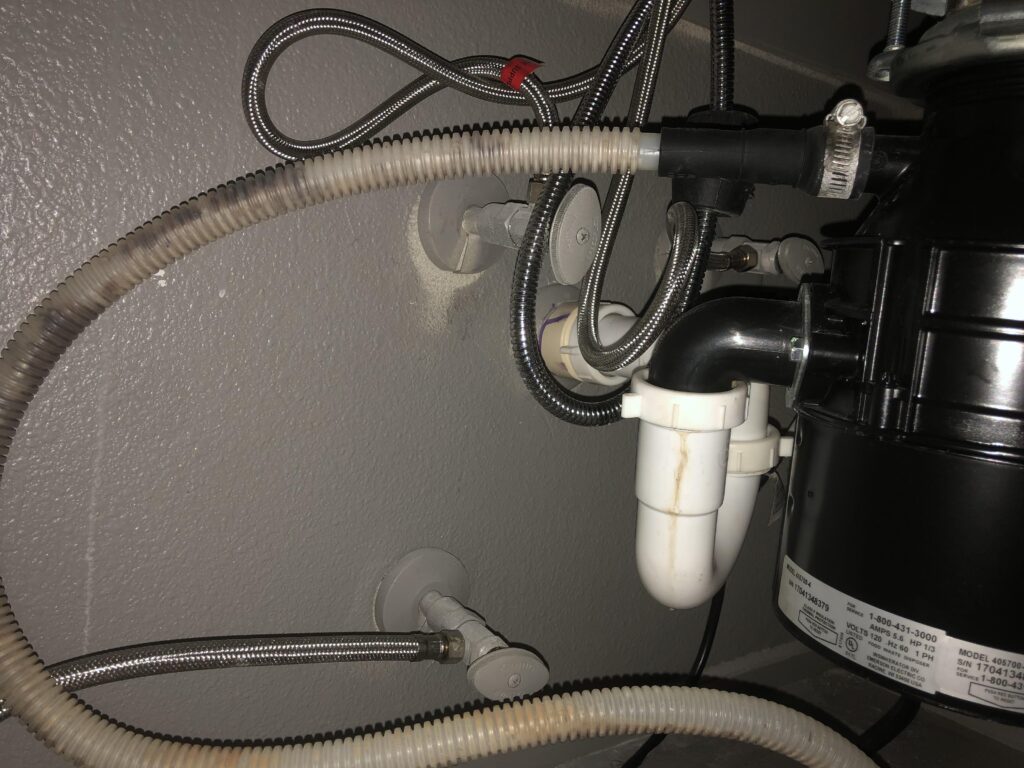
This image is property of i.redd.it.
Cleaning the Inside of the Dishwasher
Clearing the Dishwasher Filter
Apart from maintaining the drain hose, it is important to clean the inside of the dishwasher to remove any residue or debris that could potentially clog the drain hose. Start by removing the dishwasher’s filter, which is usually located at the bottom of the dishwasher. Rinse the filter under running water to remove any food particles or debris. Use a soft brush or sponge to gently scrub away any stubborn residue. Once the filter is clean, place it back in its original position.
Wiping Down the Interior Walls and Racks
Next, clean the interior walls and racks of the dishwasher to ensure that there are no remaining food particles or residue. Use a damp cloth or sponge with mild dish soap to wipe down the walls, paying close attention to corners and crevices where debris may accumulate. Additionally, clean the racks by removing them from the dishwasher and wiping them down thoroughly. Ensure that the racks are completely dry before placing them back inside the dishwasher.
Cleaning the Spray Arms
The spray arms of your dishwasher are responsible for distributing water throughout the dishwasher during a cycle. Over time, they can become clogged with residue or food particles, affecting their effectiveness. To clean the spray arms, carefully detach them from the dishwasher and rinse them under running water to remove any visible debris. Use a brush or toothpick to clear any clogs in the spray arm nozzles. Once the spray arms are clean, reattach them securely to the dishwasher.
Running a Cleaning Cycle
To further ensure the cleanliness of your dishwasher, run a cleaning cycle using a dishwasher cleaner or a mixture of vinegar and baking soda. Follow the instructions on the dishwasher cleaner or mix equal parts vinegar and baking soda in a dishwasher-safe container. Place the container on the bottom rack of the dishwasher and run a hot water cycle without any dishes. This will help remove any remaining residue or odor-causing bacteria from your dishwasher.
By following these cleaning steps regularly, you can maintain the cleanliness and optimal functioning of your dishwasher.
Preventing Drain Hose Blockages
Scraping Plates Before Loading
To minimize the risk of debris ending up in your dishwasher’s drain hose, it is important to scrape off excess food particles from plates, bowls, and utensils before loading them into the dishwasher. Using a rubber spatula or your utensils, remove food remnants and dispose of them in a waste bin. This simple step can significantly reduce the amount of debris that could potentially clog the drain hose.
Rinsing Dishes Before Loading
In addition to scraping off excess food, it is also helpful to rinse the dishes under running water before loading them into the dishwasher. This can help remove any remaining food particles or residue that can contribute to drain hose blockages. Although modern dishwashers are designed to handle dirty dishes, rinsing them beforehand can help prolong the life of your drain hose and prevent unnecessary clogs.
Using a Food Trap or Strainer
Consider using a food trap or strainer inside your dishwasher to catch any large food particles that may escape during the cleaning cycle. These traps or strainers are specifically designed to fit in the bottom of your dishwasher and prevent food debris from entering the drain hose. Regularly empty and clean the trap or strainer to ensure its optimal functionality.
Regularly Cleaning the Dishwasher Filter
As mentioned earlier, regularly cleaning the dishwasher filter is crucial to prevent debris from accumulating and potentially clogging the drain hose. Set a reminder to clean the filter at least once a month or according to the manufacturer’s instructions. This simple task can help maintain the cleanliness of your dishwasher and prevent drain hose blockages.
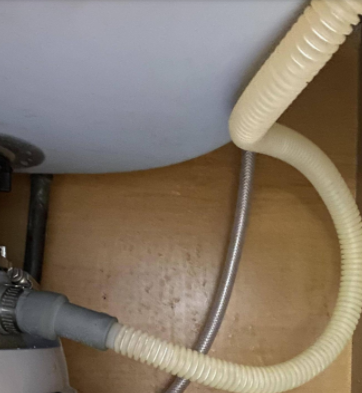
This image is property of i.stack.imgur.com.
Maintaining Proper Drain Hose Functioning
Using Dishwasher-Safe Detergents
To ensure the longevity of your dishwasher’s drain hose, always use dishwasher-safe detergents. Regular dish soap or other household cleaning agents can produce excessive suds and potentially clog the drain hose. Read the manufacturer’s instructions on the dishwasher detergent packaging and choose a suitable product that will not harm the drain hose or impede proper drainage.
Avoiding Excessive Detergent Use
Using an excessive amount of dishwasher detergent can lead to a buildup of residue and foam, which can contribute to drain hose clogs. Follow the recommended dosage instructions provided by the detergent manufacturer. A little goes a long way, and using the correct amount of detergent will help maintain optimal functioning of your drain hose.
Running Hot Water Before Starting a Cycle
Before starting a dishwasher cycle, it is beneficial to run hot water from your kitchen faucet to ensure that hot water is readily available for the dishwasher. This step helps dissolve detergent efficiently and aids in breaking down any potential residue or grease in the drain hose. Simply run the hot water until it reaches its maximum temperature, then start the dishwasher cycle.
Regularly Inspecting and Cleaning the Air Gap
If your dishwasher has an air gap, it is essential to inspect and clean it regularly to maintain proper drain hose functioning. The air gap prevents water from flowing back into the dishwasher and helps ensure effective drainage. Consult your dishwasher’s manual to locate the air gap and remove any debris or buildup by rinsing it under running water. Cleaning the air gap at least once a month will help prevent clogs and maintain proper drainage.
Checking the Dishwasher’s Installation
Verifying Proper Drain Hose Installation
To prevent drainage issues, it is crucial to ensure that the dishwasher’s drain hose is installed correctly. Check that the drain hose is securely connected to both the dishwasher and the plumbing system. Verify that there are no kinks or bends in the hose that could impede water flow. A correctly installed drain hose is vital for optimal drain hose functioning and efficient dishwasher operation.
Checking for Correct Drain Hose Positioning
Apart from proper installation, checking the positioning of the drain hose is also important. The drain hose should be elevated and securely attached to the underside of the countertop or to the side of the cabinet. This positioning prevents backflow and siphoning, ensuring that water flows freely through the drain hose without obstructions. Take a moment to inspect the drain hose’s position and adjust it if necessary.
Ensuring a High Loop in the Drain Hose
Creating a high loop in the drain hose is a crucial step to prevent dirty water from flowing back into the dishwasher. A high loop is created by raising a portion of the drain hose higher than the level of the sink or disposal. This loop acts as a barrier and prevents wastewater from reentering the dishwasher. Make sure there is a visible high loop in the drain hose and that it is securely fastened to maintain its position.
By performing regular checks on the dishwasher’s installation, you can catch any issues before they escalate and affect the drain hose’s functioning.
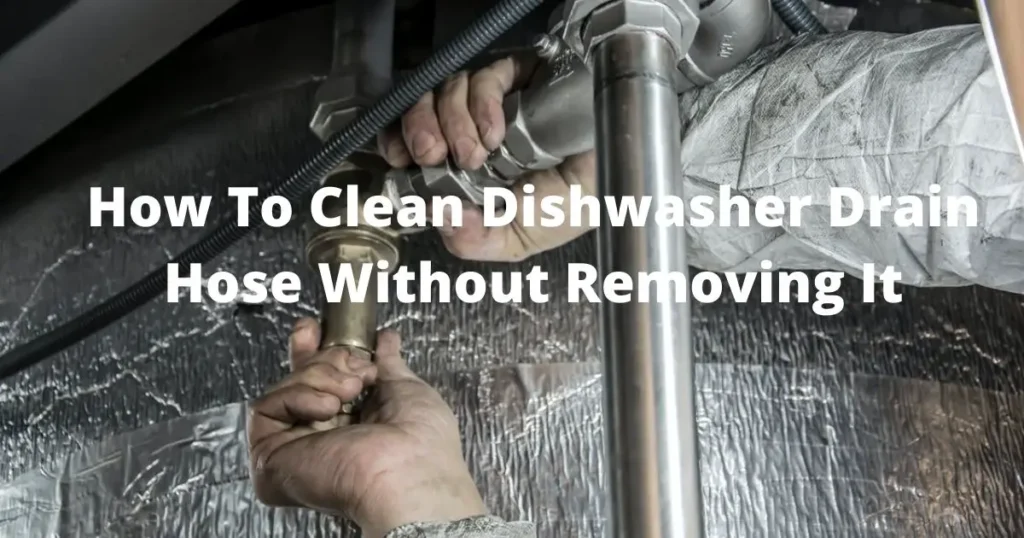
This image is property of mykitchenapex.com.
Troubleshooting Drain Hose Issues
Identifying Common Drain Hose Problems
Despite regular maintenance, drain hose issues can still arise from time to time. Some common problems include leaks, blockages, and improper drainage. If you notice water leaking from the drain hose connection points, slow drainage, or backups in the dishwasher, it is likely that there is an issue with the drain hose. Identifying the problem early on is essential to prevent further damage.
Simple Fixes for Drain Hose Leaks
If you notice a leak in the drain hose, there are a few simple fixes you can try before seeking professional assistance. Ensure that the connections are securely fastened and tightened. If the leak persists, you can try using a waterproof sealant or plumber’s tape to create a watertight seal. Apply the sealant or tape around the connections, being careful not to obstruct the water flow. Allow the sealant or tape to dry and set before testing the dishwasher.
Resolving Drainage Problems
Drainage problems can be frustrating, but they can often be resolved with a few troubleshooting steps. The first step is to check for any visible blockages in the drain hose, as mentioned earlier in this article. If there are no visible blockages, ensure that the drain hose is properly positioned with a high loop and securely fastened. If the problem persists, it may be necessary to seek professional assistance to diagnose and resolve the issue.
Seeking Professional Assistance
While there are many steps you can take to clean and maintain a dishwasher’s drain hose on your own, there may be instances where professional assistance is necessary. If you are unsure about any aspect of maintaining the drain hose or if you encounter complex issues such as persistent leaks or drainage problems, it is best to hire a licensed plumber or technician. These professionals have the expertise and knowledge to accurately diagnose and repair any drain hose issues, ensuring the long-term functioning of your dishwasher.
Precautions and Safety Measures
Disconnecting Power to the Dishwasher
Safety should always be a priority when working on any household appliance. Before inspecting or cleaning the drain hose, make sure to disconnect the power to the dishwasher. Locate the circuit breaker or unplug the dishwasher from the power outlet to ensure that no electrical current is present while you work. This precaution greatly reduces the risk of electrical shock or other accidents.
Using Gloves and Protective Eyewear
When handling cleaning solutions or sharp tools during the maintenance process, it is advisable to wear gloves and protective eyewear. Gloves protect your hands from any potential chemicals or debris, while protective eyewear shields your eyes from splashes or accidents. These simple precautions can help prevent injuries and ensure your safety while working on the drain hose.
Being Cautious with Sharp Tools
If you need to use sharp tools such as a plumber’s snake or wire to clean the drain hose, exercise caution to avoid injury. Always handle sharp tools carefully and follow the manufacturer’s instructions. Be mindful of your movements to ensure that you do not accidentally harm yourself or damage the drain hose. If you are uncertain about using sharp tools, it is best to seek professional assistance.
Avoiding Harsh Chemicals
While it may be tempting to use harsh chemicals to clean the drain hose, it is best to avoid them. Household chemicals such as bleach or drain cleaners can damage the drain hose and adversely affect its functionality. Stick to mild detergents and natural cleaning solutions like vinegar and baking soda for safe and effective cleaning.
Ensuring your safety and following these precautions will make cleaning and maintaining your dishwasher’s drain hose a hassle-free experience.
Seeking Professional Help
Determining When to Call a Professional
While you can perform many cleaning and maintenance tasks on your own, there may be instances where seeking professional help is necessary. If you encounter complex issues such as persistent leaks, clogs that cannot be cleared, or ongoing drainage problems, it is best to call a licensed plumber or dishwasher technician. They have the necessary expertise and equipment to diagnose and fix any major drain hose issues, providing peace of mind and ensuring the optimal functioning of your dishwasher.
Hiring a Licensed Plumber or Technician
When seeking professional assistance, it is important to hire a licensed plumber or dishwasher technician. Licensed professionals have the necessary qualifications and experience to handle dishwasher-related issues, including drain hose maintenance and repairs. Before hiring a professional, do some research, ask for recommendations from friends or family, and read reviews to ensure that you choose a reliable and trustworthy service provider.
By recognizing when professional help is needed and hiring a licensed plumber or technician, you can address any major drain hose issues effectively and efficiently.
Cleaning and maintaining a dishwasher’s drain hose is crucial for the proper functioning of your dishwasher and the avoidance of costly repairs. By inspecting, removing debris, flushing, and using these preventive measures, you can keep your dishwasher running smoothly while prolonging the lifespan of the drain hose. Regular maintenance and attention will ensure that your dishwasher continues to provide you with clean and sparkling dishes for years to come.


